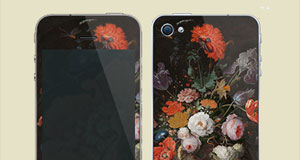…; the dealer Georges-Joseph Demotte (1877-1923), Paris and New York;{George-Joseph Demotte (1877-1923) was a prominent Paris dealer of Belgian origin specialized in medieval French art. He owned a gallery at 27 Rue de Berri, as well as a second gallery in New York at 8 East 57th Street. Demotte was killed during a hunting expedition when accidentally shot by Otto Wegener, a friend and fellow dealer. See ‘Demotte Killed in Gun Accident. International Art Dealer Shot Dead While on Hunting Expedition in France’, _The New York Times_, 5 September 1923. Although acquitted of murder by a French court, Wegener was ordered to pay damages to Demotte’s family (see ‘Compensation’, _Time_ 31 December 1923). Ownership of the gallery, with an estimated value of $2 million, was subsequently transferred by inheritance to his 17-year-old son, Lucien Demotte (d. 1934); see ‘Demotte Fils’, _Time_, 17 December 1923. At the time of his death, George-Joseph Demotte was involved in two different lawsuits. The first lawsuit was against Jean Vigoroux, Demotte’s former representative in New York, for embezzlement (see ‘Vigoroux vs. Demotte’, _Time_, 23 July 1923). A second lawsuit had been filed against the New York dealer Joseph Duveen for slander. Duveen was alleged to have described a medieval statuette sold by Demotte as a fake (see M. Secrest, _Duveen: A Life in Art_, Chicago 2005, p. 208). Five years prior to his death, Demotte was portrayed by Henri Matisse (Musée des Beaux-Arts, Lyon). A photo of the present relief is preserved in the documentation of Demotte’s photo archive, showing that the top right corner had already broken off prior to this time (see M. Boudon-Machuel, _François du Quesnoy 1597-1643_, Paris 2005, p. 278, no. 64a dér.2; M. Boudon-Machuel, ‘Du Quesnoy: Une monographie problématique’, in R. Dekoninck (ed.),_Relations artistiques entre Italie et anciens Pays-Bas: Bilan et perspectives, Institut Historique Belge de Rome_, Rome 2012, pp. 99-112, esp. pp. 108-09 (ill.). For Demotte’s photo archive, see C. Vivet-Peclet, ‘Les sculptures du Louvre acquises auprès de Georges-Joseph Demotte: De la polémique à la réhabilitation?’, _La revue des musées de France, Revue du Louvre_, 3-2013, pp. 57-70. In the 1980s, the iconographic collection of the Department of Sculpture in the Louvre was augmented with approximately 2,500 glass-plate negatives documenting works (primarily medieval sculptures) sold by the art dealers Georges-Joseph and Lucien Demotte at the beginning of the 20th century.} …; ? collection Pierre and Georges Androt, art and antiques dealers in Paris and Beaulieu sur Mer (since 1952), date unknown; to Pierre’s son, the dealer Pierre (‘Pierrick’) Androt, Beaulieu sur Mer, date unknown;{The firm’s current owner (since 2008) is Pierrick’s son, Sébastien Androt, who changed the name to Androt & Fils.} to the dealer Jeanne Agarini Sauvaigo, Nice, date unknown; acquired by Robert D’Anjou Durassow (b. 1957), Nice, in or before 2008; sale Paris (Aguttes, Drouot-Richelieu - Salle 16), 6 December 2013, no. 175, to the dealer C. Vecht, Amsterdam; from whom, €195,000, with the support of the Familie Van Poecke/Rijksmuseum Fonds and the J.W. Edwin vom Rath Fonds/Rijksmuseum Fonds, 2014{A previous owner before Vecht, Robert D’Anjou Durassow, purchased the work from the antiques dealer Agarini of Nice. Before this, Agarini had purchased the piece from the antiques dealer Pierre Androt of Beaulieu sur Mer, near Nice, who in his turn had inherited the relief from his father. None of these individuals had perceived or established any connection to Du Quesnoy. It was not until D’Anjou Durassow came across the oeuvre catalogue, in which reference was made to the Demotte collection, that he realized the object in his possession might have something quite exceptional in his possession (written communication Constant Vecht, 5 May 2014).}
Bibliography and list of abbreviations for the provenance (pdf)


